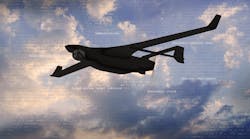Unmanned aerial systems (UAS) are being designed for a wide range of missions, including surveillance and intelligence gathering. Unfortunately, the size weight, and power (SWaP) restrictions on these systems typically limit their designs to one type of payload, meaning that they lack the flexibility for conducting multiple missions. However, fueled by two recent contracts from DARPA worth a combined $5.4 million, BAE Systems is developing technology that will equip single UAS payloads with the flexibility to perform multiple missions and adapt quickly to changing battlefield conditions.
“This agility is particularly important in denied environments, where multiple mission functions are typically needed to penetrate defenses and remain operational,” said Randall Lapierre, technology development manager at BAE Systems. “By enabling small platform systems to share core components, we’re helping them become more agile and stay on station longer.”
The DARPA program for enhanced UAS technology, CONverged Collaborative Elements for RF Task Operations (CONCERTO), is seeking the functionality of communications, radar, and electronic-warfare (EW) systems from UAS drones (see photo). The goal of the program is to create an electronic architecture that can effectively switch among multiple functions electronically—such as intelligence, surveillance, command and control, networking, and combat operations—ideally under remote control and without need of physical payload changes (such as swapping radar antennas for communications antennas).

